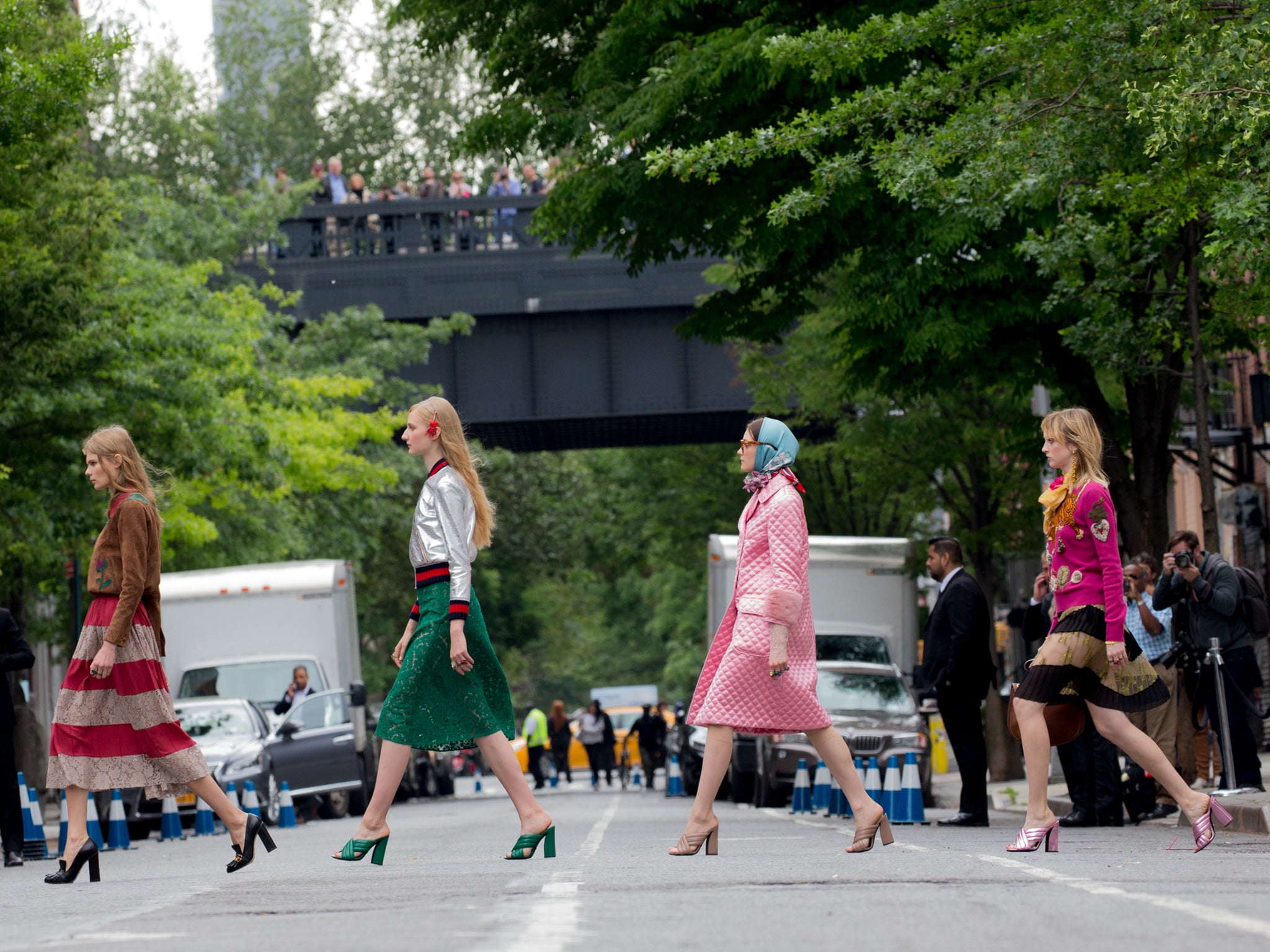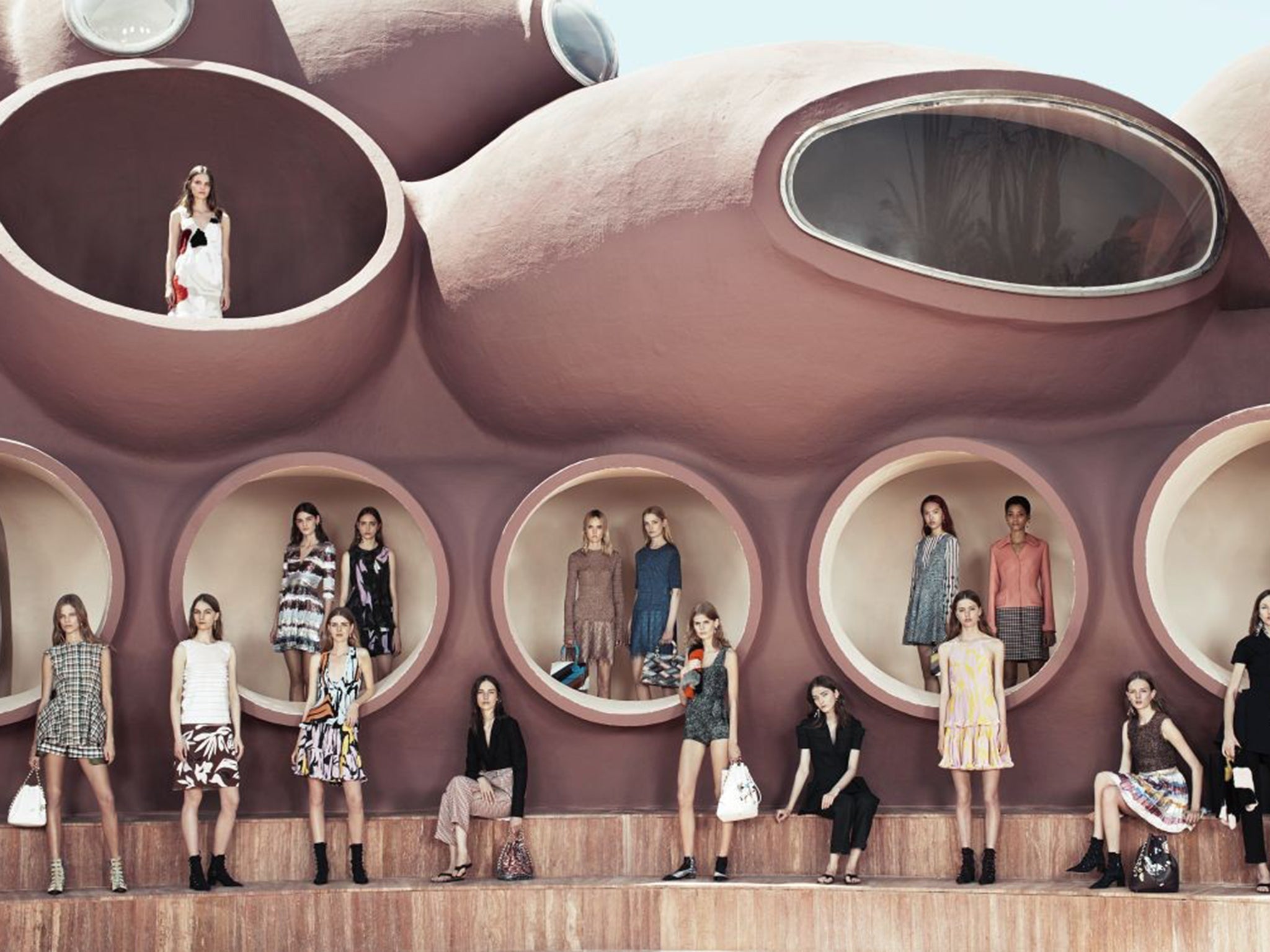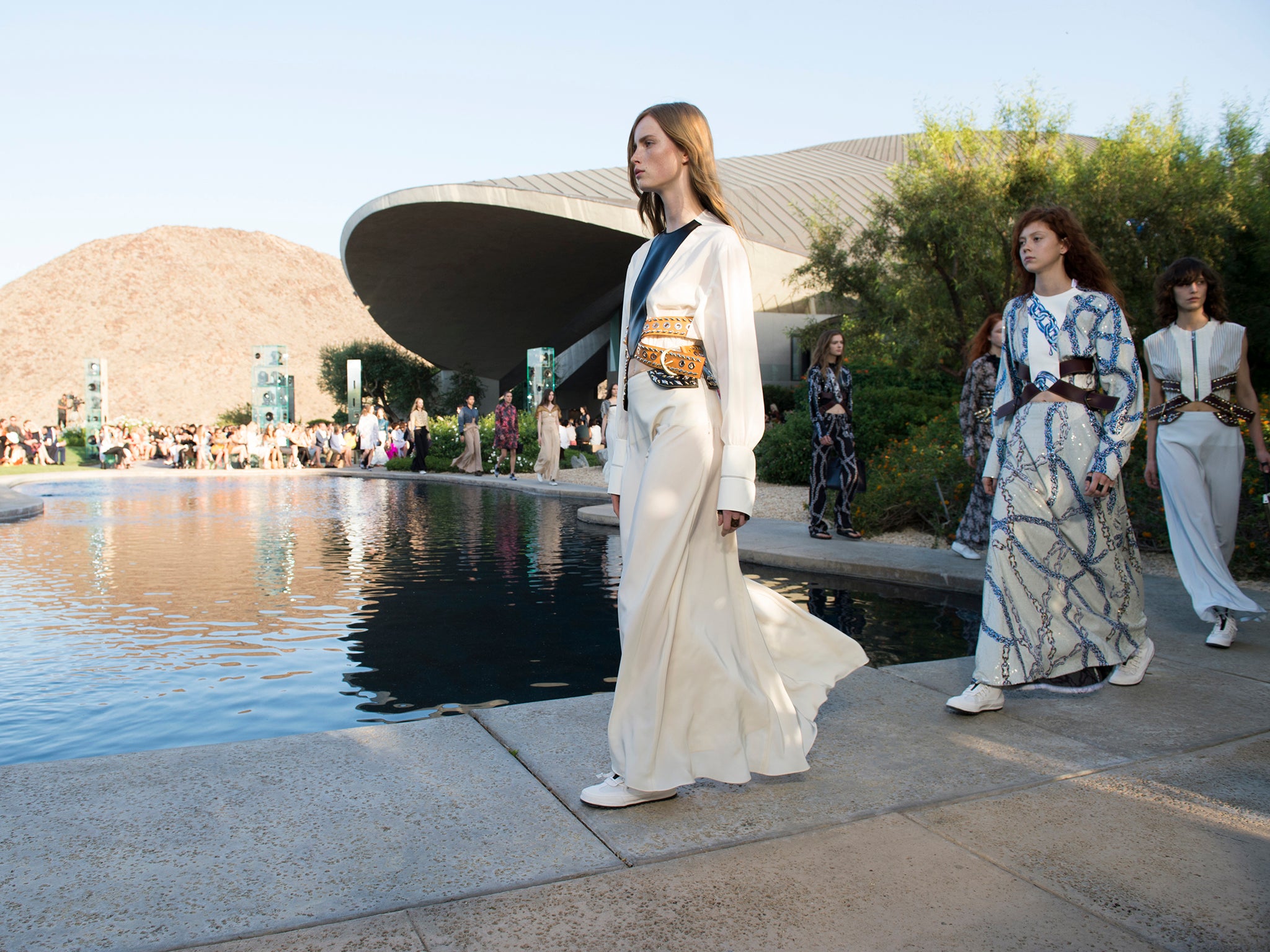Pre-collections: Fashion's new favourite thing
Pre-collections allow fashion's biggest brands them to make a bigger splash with wealthy customers – but is it all just a confidence trick?

Your support helps us to tell the story
From reproductive rights to climate change to Big Tech, The Independent is on the ground when the story is developing. Whether it's investigating the financials of Elon Musk's pro-Trump PAC or producing our latest documentary, 'The A Word', which shines a light on the American women fighting for reproductive rights, we know how important it is to parse out the facts from the messaging.
At such a critical moment in US history, we need reporters on the ground. Your donation allows us to keep sending journalists to speak to both sides of the story.
The Independent is trusted by Americans across the entire political spectrum. And unlike many other quality news outlets, we choose not to lock Americans out of our reporting and analysis with paywalls. We believe quality journalism should be available to everyone, paid for by those who can afford it.
Your support makes all the difference.The pre-collections are fashion’s new favourite thing – dubbed “Cruise” or “Resort” and “pre-Fall,” they consist of clothes that, until recently, were shunted out to buyers as commercial filler and nothing more. Pre-collections were the anodyne stuff that brands ran up to ensure shop rails were never left empty. As the moniker suggests, they were a warm-up act for the main catwalk showcase – generally, the press were shielded from them at all costs.
But they sold. Lots. They still do. Pre-collections make up the lion’s share of designer-clothing revenue – conservatively 60 per cent, for some as high as 90 per cent. They sit on the shop floor for extended periods of time too – often twice as long as the traditional bi-annual ranges. That is why, when I referred to them as interim collections, I was corrected by Michael Burke, CEO of Louis Vuitton. Worth some £18.3bn, Vuitton is the most valuable luxury brand in the world, according to Forbes. And for it, the catwalk collections are the interim.
Vuitton is one of a swiftly swelling group of brands that are making a big deal out of what was previously just about big business: last month, Vuitton spent a tidy sum to fly press and a few favoured (read: incredibly wealthy) clients out to Palm Springs to showcase Nicolas Ghesquière’s latest collection in the former estate of Bob and Dolores Hope.

That followed Chanel, which staged its catwalk show in the Zaha Hadid-devised Dongdaemun Design Plaza in Seoul (Korea now boasts the third-largest luxury goods market in the Far East); both preceded Christian Dior, which took over Pierre Cardin’s Palais Bulles outside Cannes, just before the film festival. And last week, Gucci was the latest to make a splash by jumping into the pre-collection arena, the 94-year-old brand choosing New York as the locale for its first ever Cruise show, only the second collection designed by its new creative director Alessandro Michele.
Scroll through Forbes’s 100 most valuable brands worldwide, and you’ll find the next addition to the Cruise calendar: Prada (No 74, valued at £4.7bn), which will show its Miu Miu line in July. That will be the unofficial closer to a gangling two-month season, comprising of hundreds of Cruise presentations – smallish showroom appointments, lookbook walk-throughs with designers, and the occasional small-scale show, like the Max Mara collection unveiled in its new shop in London mid-May.
The impetus for brands investing design time and manpower into pre-collections is simple. It’s also gratifying: make the clothes more complicated and interesting, and you’ll sell more of them. At least, I hope that’s the thinking.
But why are brands scrambling to throw money at these collections with quite such gay abandon, especially with economies in turmoil around the world? Russia’s, one of high fashion’s most important, is estimated to shrink by 3.8 per cent this year due to a combination of the weakening rouble and EU sanctions; Chinese sanctions on ostentation have caused Far Eastern luxury markets to contract; while Greece’s ongoing tussles with the IMF are impacting the European economy – and its luxury sales – as a whole. And yet Prada, whose overall revenue fell one per cent last year (the first time since the Italian house’s IPO listed in Hong Kong in June 2011) due to “ongoing economic uncertainty,” is pushing ahead and staging only its second ever pre-collection show for Miu Miu. Gucci’s sales in the first quarter of 2015 slid 7.9 per cent on a like-for-like basis – reflecting “a complex economic and monetary environment,” according to Kering chairman and chief executive François-Henri Pinault. But the brand continued regardless, investing heavily in its debut New York Cruise show. Fashion, it seems, is playing the Nero card. They’re fiddling with hemlines, while Europe churns.

It’s not as paradoxical as it seems. For big brands, pre-collection shows make economic sense. Vuitton’s Burke couched it in the creative: in Paris, he said, Louis Vuitton have 15 minutes in a crowded schedule to tell their “story”. He then looked around at the vista of Palm Springs, spread across the Coachella Valley: “Here, we get three days.” Three days, zero competition.
It’s already having an impact outside the pre-collection calendar: in February, Tom Ford showed his autumn/winter collection off-piste in Los Angeles and caused a ruckus by dragging the fashion press off their well-beaten four-city path. Come July, Valentino has elected to present haute couture in Rome. I warrant those two are just the first to use pre-collection practice to buck the traditional fashion system.
Those kind of shows allow big brands to bogart press and wealthy clients, impress them with their might, and convince them that, whatever is going on with the outside economy, in the cosseted enclaves of luxury they’re doing well. Vuitton, incidentally, is not only among the world’s most valuable brands but one of the most profitable, with operating margins in excess of 35 per cent. Speculating to accumulate: the oldest confidence trick in the book.
Confidence is important. It’s the overriding message of Gucci’s ongoing attempts at reviving its fortunes, for example. Whether you like the clothes or not (I do, at least some of them), the conviction of Gucci’s CEO Marco Bizzarri in his new designer, and the label’s fresh direction is commendable. The rest of luxury should take a memo. It is understandable: Gucci’s sales account for about 79 per cent of Kering’s profits, and they’ve been stagnating over the past few years. Hence the speed and force of the shift in focus (Bizzarri himself has only been in the job since 1 January; Michele came just three weeks later). Why do Cruise now? Because, for Gucci, it’s another show to hammer home that new message. I’d wager that plenty of consumers are going to get caught up in the excitement, and probably buy Gucci clothes they never would have before.
And that’s the point of Cruise shows, in a nutshell. To get people over-excited about clothes that were, traditionally, mundane, and make them buy more. Sounds cynical. But if it’s leading to better fashion, personally I’m all for it. If you’re not: tough. Cruise is cruising on. The big question is who will be next to join the jaunt?
Join our commenting forum
Join thought-provoking conversations, follow other Independent readers and see their replies
Comments